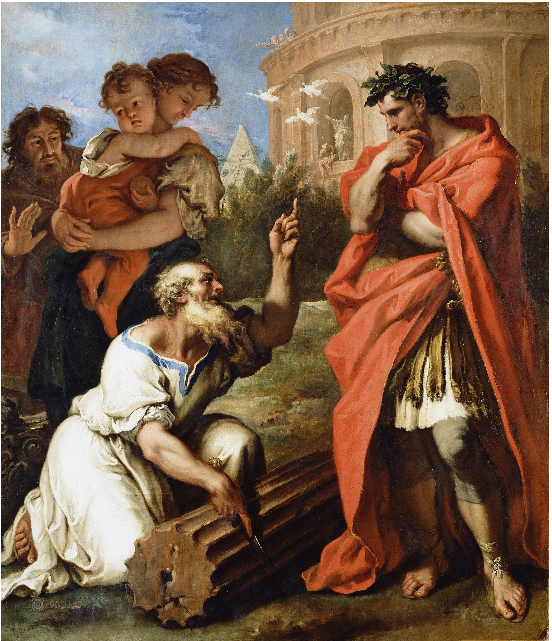Attus Navius on:
[Wikipedia]
[Google]
[Amazon]
 In Ancient Roman mythology, Attus Navius was a famous augur during the reign of
In Ancient Roman mythology, Attus Navius was a famous augur during the reign of
 In Ancient Roman mythology, Attus Navius was a famous augur during the reign of
In Ancient Roman mythology, Attus Navius was a famous augur during the reign of Tarquinius Priscus
Lucius Tarquinius Priscus, or Tarquin the Elder, was the legendary fifth king of Rome and first of its Etruscan dynasty. He reigned for thirty-eight years.Livy, ''ab urbe condita libri'', I Tarquinius expanded Roman power through military conqu ...
.
When Tarquinius desired to increase the number of the equestrian
The word equestrian is a reference to equestrianism, or horseback riding, derived from Latin ' and ', "horse".
Horseback riding (or Riding in British English)
Examples of this are:
* Equestrian sports
*Equestrian order, one of the upper classes i ...
centuries, and to name them in his own honour, Navius opposed him, declaring that it must not be done unless the omens were propitious, and, as a proof of his powers of divination, cut through a whetstone with a razor. Navius's statue, with head veiled ''(capite velato
The vocabulary of ancient Roman religion was highly specialized. Its study affords important information about the religion, traditions and beliefs of the ancient Romans. This legacy is conspicuous in European cultural history in its influence on ...
)'', stood in the Comitium
The Comitium ( it, Comizio) was the original open-air public meeting space of Ancient Rome, and had major religious and prophetic significance. The name comes from the Latin word for "assembly". The Comitium location at the northwest corner of th ...
, next to the senate-house (Livy 1.36.5); the whetstone and razor were buried in the same place, and a puteal
A puteal (Latin: from ''puteus'' (well) — plural: ''putealia''Venetian Wellheads @ Veniped ...
placed over them. According to Dionysius it was Tarquinius Priscus who set the statue up, "in front of the senate-house near the sacred fig-tree; it was shorter than a man of average height and the head was covered". The sacred fig-tree was named after Attius Navius: Navian.
It was reported that Navius was subsequently put to death by Tarquinius. According to Schwegler, the puteal originally indicated that the place had been struck by lightning, and the story is a reminiscence of the early struggle between the state and ecclesiasticism.
References
{{Reflist *F. Coarelli, ''Lexicon Topographicum Urbis Romae
The ''Lexicon Topographicum Urbis Romae'' (1993–2000) is a six-volume, multilingual reference work considered to be the major, modern work covering the topography of ancient Rome. The editor is Eva Margareta Steinby
Eva Margareta Steinby FSA ( ...
'', s.v.
*Livy
Titus Livius (; 59 BC – AD 17), known in English as Livy ( ), was a Roman historian. He wrote a monumental history of Rome and the Roman people, titled , covering the period from the earliest legends of Rome before the traditional founding in ...
, Ab urbe condita, 1.36
* Dionysius of Halicarnassus 3.71.5
*Sextus Aurelius Victor
Sextus Aurelius Victor (c. 320 – c. 390) was a historian and politician of the Roman Empire. Victor was the author of a short history of imperial Rome, entitled ''De Caesaribus'' and covering the period from Augustus to Constantius II. The work w ...
, ''De viris illustribus'', 6
* Schwegler, ''Römische Geschichte'', bk. xv. 16
7th-century BC Romans
6th-century BC Romans
7th-century BC clergy
6th-century BC clergy
Roman augurs
Executed ancient Roman people
People executed by the Roman Kingdom